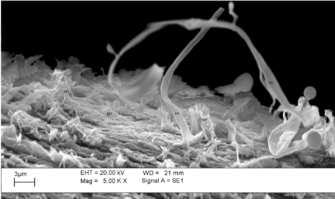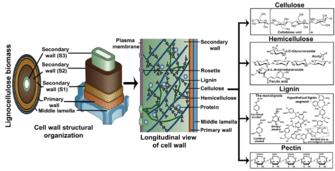Pleurotus ostreatus
Overview
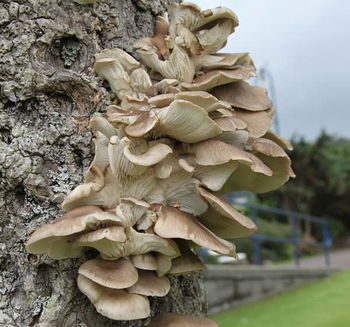
Written by Chris Goodall, Kenyon 22'
Since the commencement of the Anthropocene, humans have continued to produce increasingly significant amounts of conventionally deemed waste products. Ranging from carcinogens to complex hydrocarbons, the recent accumulation of these synthetic and organic compounds throughout global ecosystems continuously compounds into an ever increasing environmental concern (cite COP 25). Recently, efforts to combat this problematic trend have brought rise to the field of mycoremediation, a subfield of bioremediation. Mycoremediation works around the concept of potentializing non discriminate fungal enzymes as a means of concentrating, removing, and recycling complex pollutants. Among a small handful of other fungal species, Pleurotus ostreatus, a saprotroph commonly known as an Oyster Mushroom, serves a fundamental role in both the development and implementation of this field. Ironically first cultivated as a wartime ration, scientists are now looking now to this achaea for it’s potential in regard to heavy metal and organic bioremediation.
The processes of Mycoremediation practiced by Pleurotus ostreatus can occur through the following three avenues: Biodegradation, Biosorption, and Bioconversion (https://www.ncbi.nlm.nih.gov/pmc/articles/PMC4052754/). Biodegradation pertains to the process of disassembling complex organic peptides into more elementary mineral components (CO2, NO3, H2O). In addition to this unique enactment of mineralization, Pleurotus ostreatus also harnesses these mineral components for growth resulting with the creation of protein dense fruiting bodies (mushrooms) as a secondary product. Biosorpton centralizes less around catabolic activity and rather involves absorptive interactions with heavy metal ions. Because this process focuses around concentration rather than degradation, the fruiting bodies produced are both toxic and inedible, but have the potential for further repurposing (cite something good). Lastly, Bioconversion pertains to the recycling of agro-industrial sludges, an umbrella term for compounded organic waste. Essentially applied biodegradation with more nutrient dense waste, this process serves as a useful alternative to recirculating said sludge as fertilizer in agricultural systems.
In the following, I hope to properly highlight the significant and vastly untapped potential of Pleurotus ostreatus.
Section 1 -- Cellular Structure
niche formation, historical uses, all that good stuff
Include some current research, with at least one figure showing data.
Every point of information REQUIRES CITATION using the citation tool shown above.
Pleurotus ostreatus: The Next Heavy Metal Champion

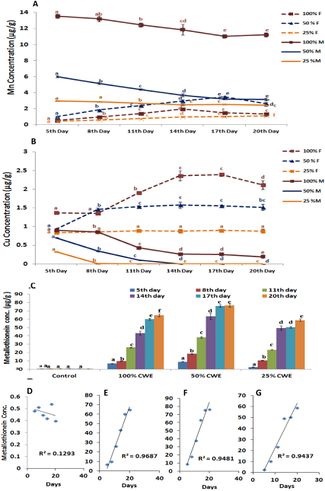
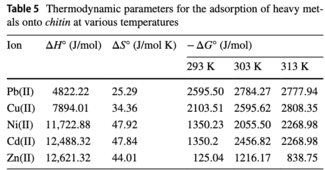
Looking to Pleurotus osteratus' potential to enact heavy metal bioremediation it's proper to first expand upon the importance of and mechanisms behind the previously outlined concept of biosorption. Heavy metal contaminates laden throughout industrial wastewater systems pose as an environmental concern due to their inability to biodegrade and compounded toxicity under concentration. Failure to properly handle these effluents allow for them to accumulate through the organisms composing adjacent ecosystems inevitably posing a significant health risk to the well being of the food chain (https://doi.org/10.1016/S0956-053X(97)10006-X). Some of the more prevalent metals found in these industrial effluents include lead, cadmium, cobalt, iron, zinc, nickel, and copper (https://www.sciencedirect.com/science/article/abs/pii/S0147651317304141?via%3Dihub). All of which have the potential to form free radicals and cause detrimental confirmation changes in enzymatic function or membrane stability due to the oxidized states in which they are dispatched into these effluents (https://www-sciencedirect-com.libproxy.kenyon.edu/science/article/pii/S0304389409000806?via%3Dihub).
Prior to the more recent and widespread use of mycelium biosorption, ulterior methods have included ion exchange, chemical precipitation, coagulation, and membrane filters (doi:10.1016/j.memsci.2009.03.030). Although effective to a certain extent, historically, each one of these processes ends up producing various secondary toxic sludges. Specifically looking to ion exchange, as it pertains to a similar uptake method practiced by Pleurotus ostreatus, the synthetic process produces a significant amount of hydroxide sludge that almost counteracts efforts to detoxify the effluent produced (http://researchrepository.murdoch.edu.au/). Instead of releasing heavy metals into waterways, industrial companies have opted for alkali sludge. Fortunately, the first step of biosorption practiced by Pleurotus osteratus poses a cheaper and more effect solution to this back ended problem. As suggested by Tay et al. 2011, Pleurotus ostreatus uses a coupled mechanism of chemisorption (link wikipedia or something) with a potassium ion gradient to draw heavy metal ions into its mycelial tissues(https://doi.org/10.1007/s11814-010-0435-9). Additionally, this preposed mechanism has been observed in subsiquent publications through interactions with chromium, copper, and lead (https://doi.org/10.1016/j.mineng.2007.08.013). The rate of uptake for these nutrients produce sigmoidal curves indicate of second order kinetics with distinguishable lag, log, and stationary phases. Furthermore the maximum biosorption capacity per mg mycelial tissues far out-succeeds the potential of synthetic ion-exchange practices and also does so without generating the byproduct of an alkali sludge (https://doi.org/10.1007/s11814-010-0435-9.
From an economic standpoint, Pleurotus ostreatus mediated biosorption is also vastly less expensive than its synthetic counterparts under low concentrations of metals in efflux (https://doi.org/10.1016/j.procbio.2004.12.007). Consequentially, the biosorption potential of Pleurotus ostreatus is connected to the concentration of heavy metal ions originally present in the efflux. More specifically, diluted efflux concentrations showed the greatest potential for biosorption (https://doi.org/10.1016/j.ecoenv.2017.07.001). Interestingly, the process of biosorption also doesn't necessarily rely on the Pleurotus species to be alive. According to Srinath et al. 2002, because the process of biosorbtion is metabolism independent, both living and dead cells have the potential to enact it (10.1016/S0045-6535(02)00089-9). As a result, efflux priorly too hazardous even for the survival of these versatile archaea can still undergo the process of biosorption with the implementation of inanimate Pleurotus osreatus.
The ion exchange gradient only composes half of the process of biosorpton though. The second step of two centralizes around the mechanisms that concentrate and bind heavy metals to the growing mycelial tissues. Conventionally, the process of chemical precipitation or coagulation has involved the use of lime and aluminum salts to acidify and precipitate out heavy metals at the limitation of being a highly time consuming process (DOI 10.1186/s40201-015-0233-8). In recent years, organic polymers have also been used to bind to and absorb heavy metals, but came with the drawback of producing secondary pollutants form this series of chemical interactions (https://doi.org/10.1016/j.jhazmat.2004.04.018). Similar to the more recent use of organic coagulants in the process of chemical precipitation, the mycelial tissue of the growing microorganism acts in a variety of ways to bind and manage heavy metals. The first of which is a process known as cell-wall adsorption (doi:10.1016/j.mycres.2006.12.001. This metabolically-independent process is enacted by Pleurotus osteratus through binding heavy metals to the melanin and chitin that compose its hyphal cell walls. Furthermore, melanin and chitin work exceedingly well as heavy metal receptors on account of the carboxyl, phosphate, and nitrogen containing ligan groups associated with these structural carbon compounds(10.1007/s13205-013-0140-6). As previously mentioned, and on account of the lacking need for metabolic input, inanimate Pleurotus cells retain the ability to also bind heavy metals at the expensive of lacking ATP production capabilities to sequester these minerals from the hyphae into growing tissues. A secondary mechanism of handling heavy metals, as practiced by Pleurotus ostreatus and observed within the electron scanning image of hyphal tissue to the left, involves the creation of metal precipitates known as oxalates. These concentrated pockets of heavy metal ions then intermittently reside throughout the hyphal network in an immobilized state as the species continues growth.
Regardless of being a metabolically-independent process, there still exist factors that influence uptake rates of heavy metal ions in Pleurotus ostreatus. First examining the effects of pH, it has been reported that the binding of heavy metals to chitin and associated ligan groups is limited under conditions of extreme acidity (10.5772/intechopen.72099). Because the high presence of hydrogen ions physically block the available surface area of the chitin molecules, the frequency of interactions with the alkali groups of these structural carbon components are significantly reduced. Similar to the responses observed with heavy metal ion uptake, the concentrations of metals present sequentially factor into biomass incorporation rates (https://doi.org/10.1007/s13201-019-0926-8). further paralleling the kinetic results of the uptake rate of the ion gradient, the rate of concentration dependent incorporation also assumes a pseudo-second-order kinetic model. Lastly, although more specific on an elemental basis, temperature also influences the rate of this structural ion assimilation.
In addition to serving as a cheaper and more effective alternative to synthetic coagulants, biosorption also mimics the inate potenial of these precipitants in regard to the purification and repurposing of the concentrated heavy metals. Although the majority of existing research on the topic of heavy metal biosorption currently focuses around the mechanisms of uptake and comparative efficiencies to alternative treatments, the pre-acknowledged incorporation of heavy metal ions into the growing tissues and fruiting bodies of this microorganism suggest the potential for further extraction from the carbon network in which they are entwined.
In summary, although previously overlooked for many years, biosorption has gained traction on account of its ability to outcompete industrial remediation counterparts from both an economic and environmental standpoint (https://kopernio.com/viewer?doi=10.1007%2Fs11814-010-0435-9&token=WzQ5MTg3MiwiMTAuMTAwNy9zMTE4MTQtMDEwLTA0MzUtOSJd.8TXO2izwQ4Qg6UcJLFvq6FDHEYE). Harnessing Pleurotus ostreatus' natural heavy metal cycling potential in a more specific industrial setting has been proven to outcompete other prior biochemical remediating agents in regard to time, efficiency, versatility, and the lack of creating secondary pollutants. Furthermore, the naturally entwined process of the heavy metal ion gradient and subsequent concentration of these ions within growing hyphal tissues condenses multiple current remediation practices into a single, more effective, process.
Section 3 -- Biodegredation and organic cycling
Although still significant in an environmental context, heavy metal ions from industrial efflux only compose one sector of concerning environmental pollutants. As the human race further progresses into the anthropocene, so does our demand for and reliance on sources of energy. Unfortunately, this ever increasing demand coincides with a greater potential for the production of both raw and processed organic waste. Being an essential component in the process of detrital cycling, current research now looks to Pleurotus ostreatus and other fungi for their applied potential to recycle complex molecules into their mineral components (10.1186/s13568-014-0029-8). This process of mycoremediation functions under the sector of activity deemed biodegradation and has shown an extensive potential to act upon carbon based compounds (throw in like 2-3 different sources here to prove variety).
Aside from immediate concerns of oceanic petroleum spills (site S&F on bacteria eating petroleum) the human race is still faced with the consequential problem of disposing the secondary pollutants produced from the fruits of these activities such as petroleum based plastic polymers. In light of the traditional approach of dumping plastic into the oceans or simply burying and forgetting about it in landfills (as of 1994 it was estimated that plastics compose 20-30% of total landfill composition ("Characterization of Municipal Solid Waste in the United States: 1994 Update")) recent developments into OXO-biodegradable plastics have shown a promising potential for reducing the rate of raw plastic accumulation throughout global systems (We neeeeed a source to make this claim). More specifically developments in the potential implementation of organic polymer biodegradation by Pleurotus ostreatus has shown exponentially increased rates of mineralization in comparison to systems lacking such presence (doi:10.1371/journal.pone.0069386).
Prior to exploring the specific mechanisms implemented for the biodegradation of these OXO-plastics, it's important to first outline the fundamental pathways implemented by microorganisms, and more specifically white rot fungi, in this process of breaking down a complex polymer. Because many polymers are too large to pass through a cellular membrane, the initial step of microbial mediated biodegradation involves one of two pathways known as direct and indirect biodegradation (https://doi.org/10.1351/pac198052020399). Focusing specifically on indirect biodegradation– as the current research on Pleurotus ostreatus seems to indicate the use of this mechanism (doi:10.1371/journal.pone.0069386)– this aerobic process involves the secretion of enzymes that oxidize larger polymers into subsequent monomers (https://doi.org/10.1351/pac198052020399). Upon oxidation, the fungal species continues to scavenge upon these monomers drawing them into cellular tissues for further metabolism. In the case of Pleurotus ostreatus, this process is mainly carried out through laccase cometabolism, a sub-category of lignocellulolytic activity (doi:10.1371/journal.pone.0069386). Simply put, the fungi uses a specialized series of catabolic enzymes to break down polymers into monomers through oxidization and hydrolysis. Additionally, similar to how seeding chocolate when tempering it jumpstarts the recrystallization process, adding an elementary carbon source to the fungal OXO-biodegradable plastic system showed a similar jumpstart reaction that further complemented the process of laccase cometabolism and produced evidence of complete mineralization within the first 45 days of culturing (doi:10.1371/journal.pone.0069386).
In addition to understanding Pleurotus ostreatus' unique metabolic potential to fully degrade organic polymers, it's also critical to acknowledge the secondary benefits of complete mineralization. In contrast to how biosoprtion renders the growing fruiting bodies of the species inedible, when biodegrading organic molecules, the fruiting bodies of the mycelium become a protein dense product in themselves. Pleurotus species alone currently compose 25% of global mushroom cultivation, are packed with protein and essential vitamins especially important to inhabitants of developing countries, and are usually cultured on straw or barley (doi:10.21161/mjm.03912; doi:10.1016/S0032-9592(02)00040-7). Problematically, shifts to industrialization tend to decrease agricultural productions while further creating excess amounts of waste materials. One of the most common occurrences of these waste products comes in the form of sawdust, a nutrient poor lignin rich substance that, according to the U.S. Department of Agriculture, truly lacks any sort of economic value (https://www.fpl.fs.fed.us/documnts/fplrn/fplrn208.pd).
Despite this apparent lack of nutritional presence or conventional applicability, the work of Yildiz et al, 2001. looked to the untapped potential of sawdust in the context of mycoremedaiton, and more specifially, in regard to the use of the substance to culture Pleurotus ostreatus. In spite of the sheer lack of nutrients present in lignin, Yildiz et al, 2001. found that if supplemented with slightly more nutrient dense wastes such as paper, vegetative stocks, or leaves, the growth rate of the fruiting bodies of the Pleurotus ostreatus species would increase significantly (doi:10.1016/S0032-9592(02)00040-7). The highest observed outcome from a mixed sawdust media involved 50% sawdust and 50% hazelnut leaves producing a product with an 102.5% biological efficiency. Considering that the fruiting bodies of these mushrooms are arising from previously deemed useless materials, these results are quaintly impressive. Pleurotus ostreatus' usage of priorly deemed useless biomass expands upon prior conceptions of harnessable source for nutrient production and further exemplifies the potential application of this species to mycoremediate organic sources of waste in an environmentally productive context. Additionally, because the fruiting body of this mushroom serves as a significant source of protein, further cultivation efforts of this fungi using organic waste as a substrate could defer the sheer demand for meat products indirectly contributing to reductions in global methane production.
Section 4 -- The Carcinogen Cleaner
literally resistant to other clean up measures and carcinogenic in cases
nope, our mushroom friends said fuck it, i’ll turn that into a fruiting body
Bioremediation of Direct Blue 14 and Extracellular Ligninolytic Enzyme Production by White Rot Fungi: Pleurotus Spp. doi:10.1155/2013/180156
Conclusion
References
Authored for BIOL 238 Microbiology, taught by Joan Slonczewski, 2018, Kenyon College.
